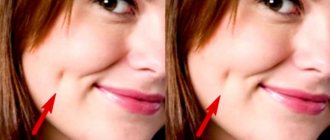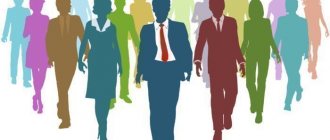Have you ever wondered if it’s a disease to constantly post photos of yourself?
Modern psychology follows closely fashion, modern trends and new disorders of the human psyche. Of course, the love for “selfies” has not escaped the attention of psychologists.
Today we will talk about the psychological characteristics of people who are passionate about selfies. So, the psychology of selfies. Selfie is a disease of the 21st century.
Of course, excessive enthusiasm is not considered the norm, when a person cannot live a day without posting his photos online. Again, this does not include show business stars. For them, this is part of their image, budget PR and advertising.
“Selfism” allows you to identify several psychological problems of an individual.
Selfie (from the English self - “oneself”), or “self-love” or narcissism. Excessive narcissism leads to the development of a narcissistic personality type, when a person is unable to love anyone but himself.
Close-up of face - emancipation and arrogance
Such a photo is a manifestation of egocentrism, while the tilt of the head, camera angle and facial expression in the photo will tell about the different qualities of a person. So, if a girl has made her lips duckface - Duckface - she demonstrates her liberation and tells the opposite sex that she is “already ripe” for a love relationship.
Taking your phone to the beach: what to do if your smartphone falls into the water and how to save it from the sand
- Wide-open or bulging eyes indicate a person’s talkativeness, his doll-like daydreaming.
- A selfie with your eyes away from the camera is an indicator of existing secrets and reluctance to share the truth about yourself with others.
- If the head is tilted to the side, this is an easily addicted person; even small innovations are very important and noticeable for her.
- The way the author held the gadget during the photo will also reveal the secret of his personality: if the photo is taken from above the face and the head is thrown back, this indicates arrogance and an exaggerated sense of self-esteem. Such a person will never yield to his opponent in anything, even realizing that he is wrong.
The benefits of selfies
Selfies also have a purely practical side:
- Record your success in losing weight. You don’t have to post it, but sometimes you want to be happy for yourself publicly.
- Get support, share sadness or joy. Selfies are great at conveying emotions. True, if a person in real life has someone to talk to, then he is unlikely to run to tell the world about his failures. But sometimes you really want to shout to the whole world about joy. That's what selfies are for.
- Do something nice for a friend. Imagine that you received a long-awaited package in the mail with a warm sweater. The person who gave the gift will be pleased to see a selfie of you wearing this sweater.
- Confirming your location for your boss or jealous spouse. Not the best example, but it also happens.
- Self-motivation. For some people, a selfie page is simply a virtual photo album that reminds them of significant events.
It’s not scary if a selfie is one of the ways to receive attention, love, support, and care. If this is just an addition, if a person is not ready to jump off a cliff for the sake of a like, then this can be called healthy psychotherapy. Everyone has their own level of need for attention.
Full-length photo in the mirror (fitting rooms, elevators) - low self-esteem
- Such photos are taken by people who are unsure of their capabilities and appearance. According to the laws of photography, in order to look good in a photo, a person must tense his muscles, and mirrors and bright light enhance the sense of self-control, which forces him to tone himself up. Therefore, on a subconscious level, such a person chooses for photos those places where he has to gather in order to turn out perfect. Such people need constant “patting on the head”, which they receive through likes.
- If in the photo part of the face is blocked by a gadget or hair falls in the eyes, the person is afraid to show his real self.
“We spent 10 thousand in 10 days without traveling”: vacationers talked about their vacation at Ukrainian resorts
What is a selfie
Selfie can literally be translated as “yourself.” This is a type of photography in which a person captures himself using an outstretched arm or a special device - a selfie stick.
Scientists from the Georgia Institute of Technology were able to identify several interesting facts about selfies during the study:
- The peak of interest is between the ages of 18 and 35.
- Among all selfie lovers, 70% are women.
- More than half of the photographs reflect the author’s appearance, including the choice of clothing, makeup, and hairstyle.
- In second place in popularity are selfies with family and friends. So-called social selfies.
- Less popular are selfies that emphasize ethnicity, telling about the author’s vacation, travel, or sports.
As a result of an empirical study, scientists came to the conclusion that selfies are part of self-presentation, an element of the Internet image. It's no secret that on the Internet people are often who they want to be, and not who they really are.
The purpose of the photo is to convince other users of the success of the author of the page. As a rule, success in life on the Internet is measured by physical attractiveness, wealth and health. People even risk their lives for an interesting photo. Unfortunately, risks are not always successful.
And that is not all. Surely you have seen a lot of jokes from the “expectation - reality” section, which clearly show the behind the scenes of social networks. But why and who needs such show of dust or real boasting of one’s own material values?
Antics (squints, sticks out tongue) - internal discomfort
- People make faces on camera who want to hide their mental pain. By posting “caricatures” of themselves, they seem to be asking others to have fun with them, to keep them company when they feel sad and melancholy.
- Braggers stick out their tongues (remember how in childhood we said “be-be-be” and stuck out our tongues). And if at the same time the eyes are still narrowed, the person is very envious and wants to make others envious of himself.
Illustration of “Vesti”, click to enlarge photo
The Case of Danny Bowman
One of the turning points in the attitude of doctors to selfies was the infamous case of 19-year-old Danny Bowman in 2014 in Britain. Danny spent about 10 hours a day taking about 200 selfies. He took about 10 pictures immediately after waking up. In his daily attempts to achieve the “correct” photograph, he dropped out of school, lost 14 kg and did not leave the house for six months. He ended up trying to kill himself when he couldn't get the perfect photo: Frustrated by his failed attempts, Danny swallowed pills. His mother saved him from certain death.
Photo from lifeasahuman.com
Danny Bowman
“I was constantly trying to take the perfect selfie, and when I realized I couldn’t, I wanted to die. I lost friends, education, health and almost lost my life,” he later told The Mirror.
He was recognized as Britain's first selfie addict and was sent for treatment to Maudsley psychiatric hospital. As part of the treatment, Danny's smartphone was periodically taken away for 10 minutes, gradually increasing the interval to 30 minutes and an hour. “It was painful, but I knew I had to do it if I wanted to continue living,” Bowman told the Sunday Mirror.
A photo with individual parts of the body without a face - activity and showing off
By posting a photo showing only his legs, a person subconsciously brags to his followers on social networks: “I’m moving, I’m achieving something, that’s why I’m having such a great time!” At the same time, pay attention to the position of the legs: if the ankles are crossed, this is a sign of a person’s psychological closedness, he will not tell anyone about his real feelings.
- If the toes are turned towards each other, as if clubfoot, this indicates clumsiness in life, indecision and the inability to withstand stress. Such a personality is easy to unbalance.
- If the toes are apart and the heels are together, such a person confidently walks through life, standing firmly on his feet. He is peaceful and satisfied with the state of affairs.
- If there are two pairs of legs in the photo, the one who posted the photo tells the world that he is not alone, but at the same time is not ready to tell who his other half is. This is a silent message: “Who is with me is none of your business!”
- Pictures in which only an arm extended forward, most often with a glass of coffee, characterize a person as spiritual and emotionally excitable. He easily switches from admiration to indignation, from love to hatred, from tears to laughter. And such “swings” in his mood make communication with him interesting. If at the same time the hand tightly grips some object, this is an active person, ready to take action if necessary.
Psychological reasons
We have already come to the answer. First of all, the incentive is the system of values and needs of the individual.
- Those who are not satisfied with their own lives like to fake photos for the Internet. The same is true for photo processing. We are not talking about beautiful professional photography now. We are talking about the abuse of Photoshop, changing your own figure, eye color, etc.
- Those who are truly financially secure post real photos on Instagram to arouse the envy of other people, to show off, to increase self-esteem, and to assert themselves.
- There is a third category of people. Those who simply love themselves have narcissistic traits in their character.
- Sometimes a selfie is accompanied by really interesting information or a demonstration of a beautiful place or an exciting event. “But why not just take a photo of your surroundings?” you ask. The author wants to show maximum involvement in what is happening, to clearly prove that he was there. Otherwise, try to prove to the public that it was just him who took the photograph. This stems from the need for attention, significance, involvement in something important. At least important from the author's point of view. And more often than not, he wants to receive support, approval, and a positive assessment of his actions.
- For still fragile individuals, selfies are a form of self-knowledge. More precisely, a person finds out how the world wants to see him. Comments, likes, and dislikes form an individual’s idea of the acceptability or impermissibility of actions, emotions, and places captured in the photo. A new hair color, a hairstyle, hobbies, training courses - an undecided and insecure person yearns to receive an answer from society for everything.
- There are people who enjoy public life. They don’t want to offend anyone, to rise up. They just want to show off. As a rule, active selfie users have a circle of admirers and admirers. This is a kind of fame game. You can, of course, go further and assume that this is an unfulfilled need for love, a consequence of loneliness. But, as Freud said, “sometimes a cigarette is just a cigarette.” There are people with demonstrative traits.
Interesting fact! According to one theory, the addiction to selfies is the result of a desire to harmonize the environment, to experience and accept an unsatisfactory reality. In psychology there is a concept of aestheticization. This is a defense mechanism in which a person attaches aesthetic significance to traumatic things.
The desire for self-knowledge and self-development
Photos are a great motivator for those who want to lose weight or simply not lose weight. Such selfies are not always made public. However, the most desperate ones still post “themselves” from the “before” and “after” series. A selfie allows you to see yourself from the outside, get used to your appearance, and increase your self-confidence. If you want to use selfies for self-discovery, take a few photos and think about which ones you will never publish, why, whose eyes are you afraid of?
“Another good idea for selfies is to take pictures of yourself when you are in a wonderful mood, when you are happy,” advises Eka Kadagidze. - Look at your face. What made you happy here? What kind of people are involved? How can you experience these feelings again?
Literature
- Tiidenberg K. Body and Soul on the internet - making sense of social media. Tallinn: Tallinn Ülikooli Kirjastus, 2021.
- Tiidenberg K. Moral Panics and Social Shaming with Selfies // Psychology Today, 2021.
- Tiidenberg K. Selfies: Why we Love (and Hate) Them. Emerald Society Now Books, 2021.
We publish abbreviated recordings of lectures, webinars, podcasts - that is, oral presentations. The speaker's opinion may not coincide with the opinion of the editors. We request links to primary sources, but their provision is at the discretion of the speaker.
Where can you study on the topic #sociology
Grant
Internship for regional researchers from the National Research University Higher School of Economics
During the whole year
Well
Sociology of media
As you type
Well
Research
Women's selfies. For women, the first priority is to demonstrate external data, the second is social life.
Men's selfies. For men it’s exactly the opposite. Social life comes first: his achievements, purchases, travel, cars, meetings with friends and colleagues, restaurants, etc. In second place are external data: a beautiful torso, biceps, a new suit and just facial expressions.
In any case, everyone who uploads their photos online is driven by the desire to gain approval and admiration from others.
“Selfism” poses a threat only in advanced cases. As they say: everything is good in moderation. Did you like the article? Share with friends:











